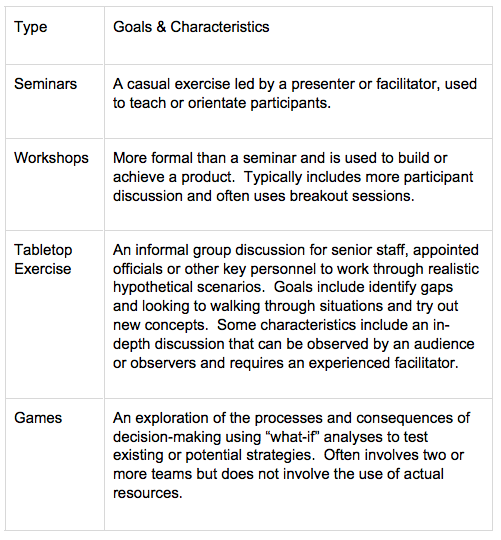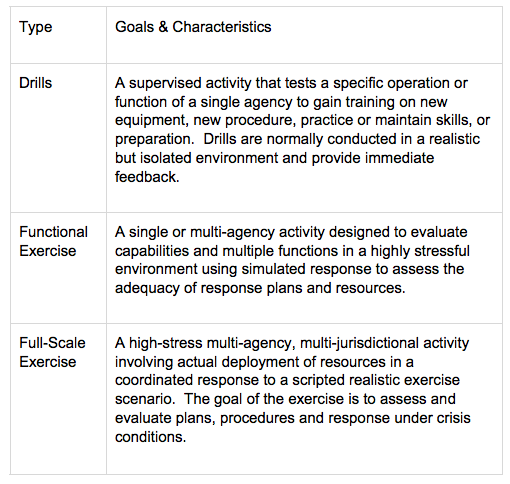As seen in human-caused events such as the 9/11 attacks, the Virginia Tech, Columbine, and Aurora, CO. shootings, as well as natural events such as “Snowmageddon,” the name used to describe the various blizzards impacting parts of the world in the last four years, hurricanes, and earthquakes, response assets are tasked with handling the crisis and consequence results. To prepare for numerous scenarios, response assets take part in all forms of training that range from Discussion-Based to Operations-Based exercises which include the actual deployment of resources. Each form of training exercise has unique goals and characteristics of conduct. Below, table 1 describes discussion-based exercises and table 2 describes operations-based exercises.
Discussion-Based Exercises

Operations-Based Exercises

Exercises play a vital role in preparedness by enabling stakeholders to test and validate plans and capabilities, and identify both capability gaps and areas for improvement. A well-designed exercise provides a low-risk environment to test capabilities, familiarize personnel with roles and responsibilities, and foster meaningful interaction and across organizations. Exercises bring together and strengthen the responders in their efforts to prevent, protect/deter, mitigate, respond to, and recover from all hazards. Overall, exercises are cost-effective and useful tools that help the nation or an organization practice and refine our collective capacity to achieve the core capabilities preparedness goals.
Because most of the expertise utilized in the contribution to this paper originates from tabletop exercise experience, this paper will focus on tabletop exercises and pose the question of whether they are an effective form of preparing response assets. Tabletop exercises can be as much as 10 times less expensive than a full-scale exercise and may be able to address issues and plans with stakeholders that have the ability to make appropriate organizational changes. Additionally, by solely focusing on tabletops, the successes and limitations of these exercises can be thoroughly examined and evaluated for their effectiveness.
